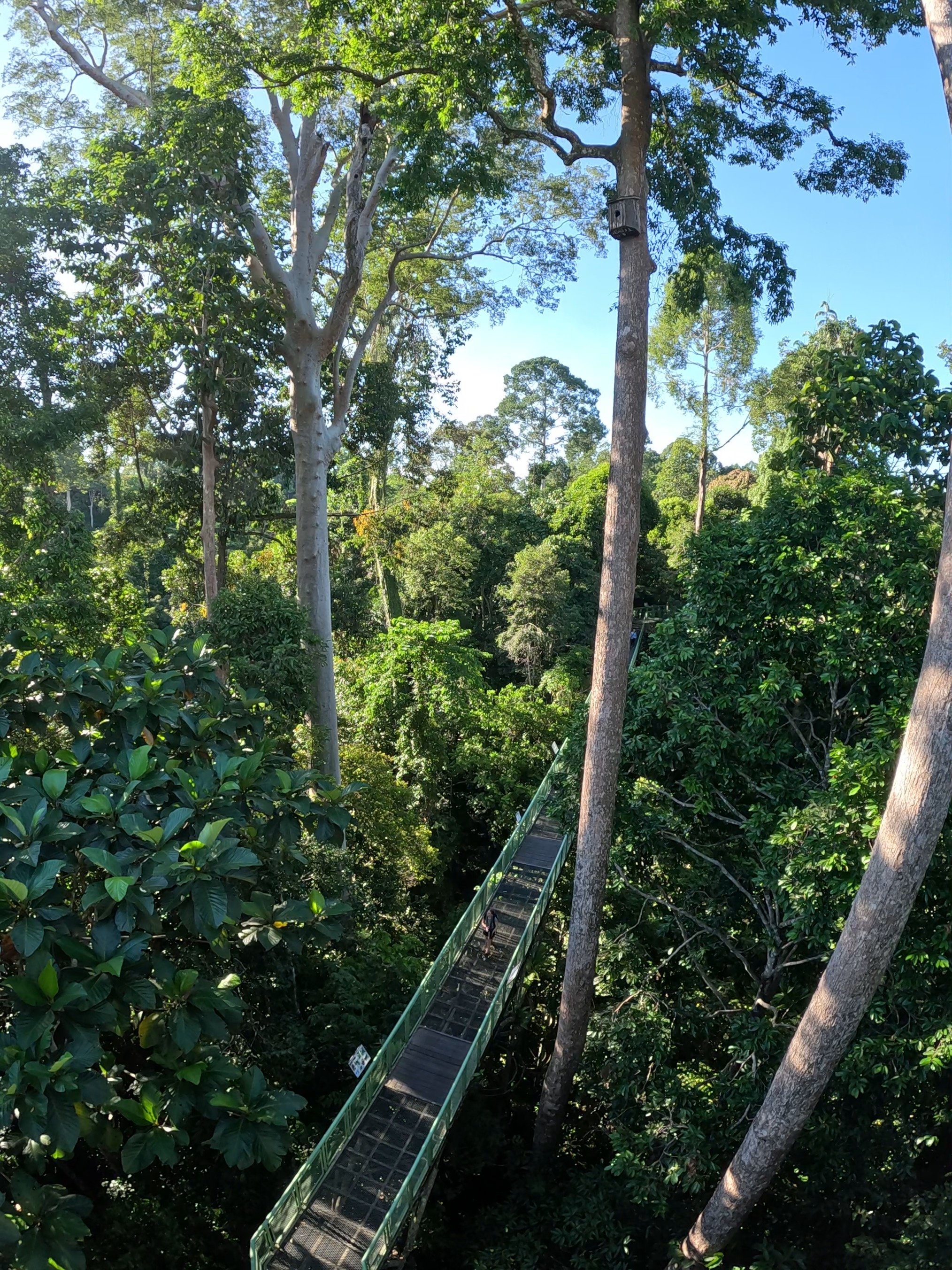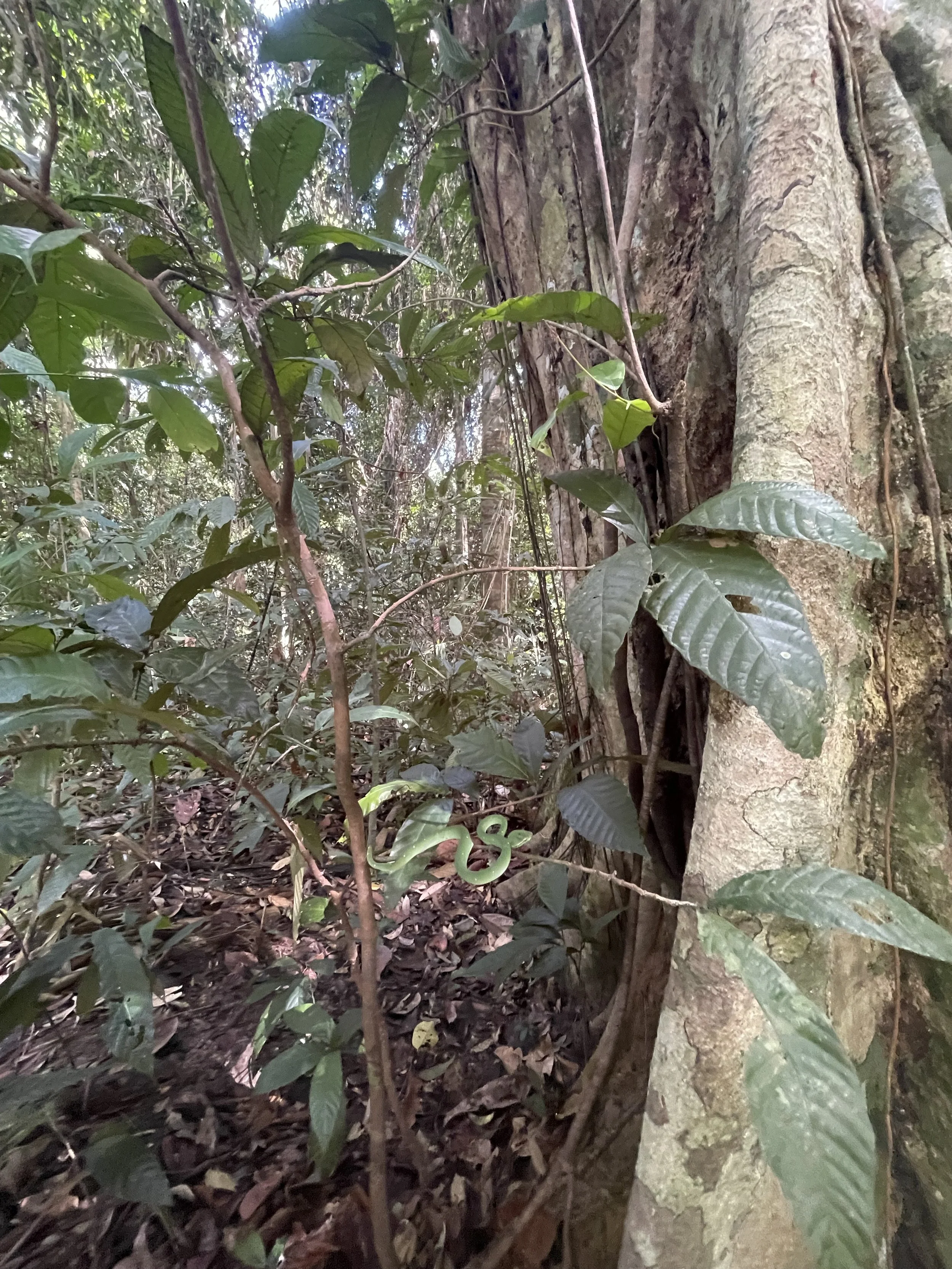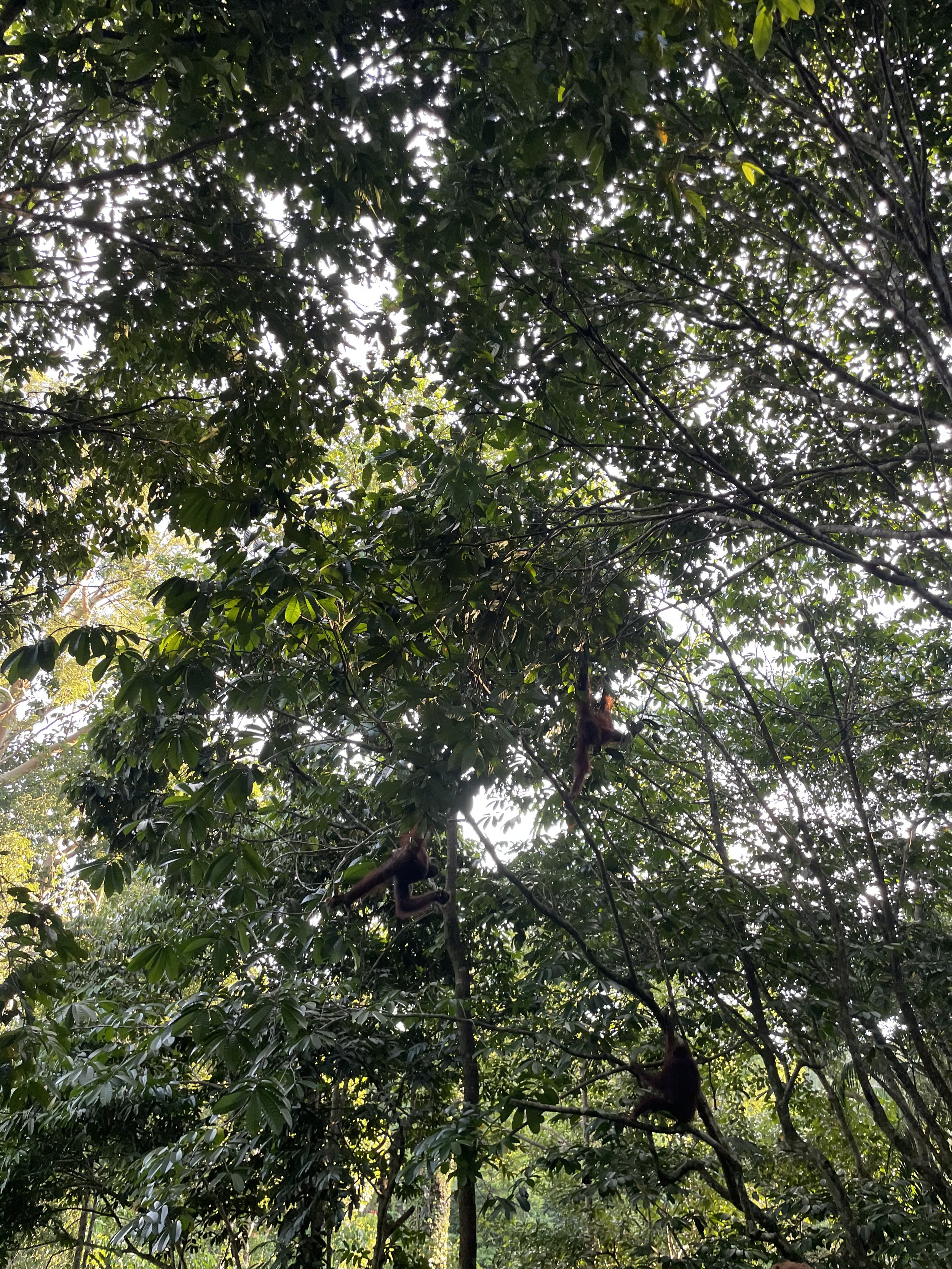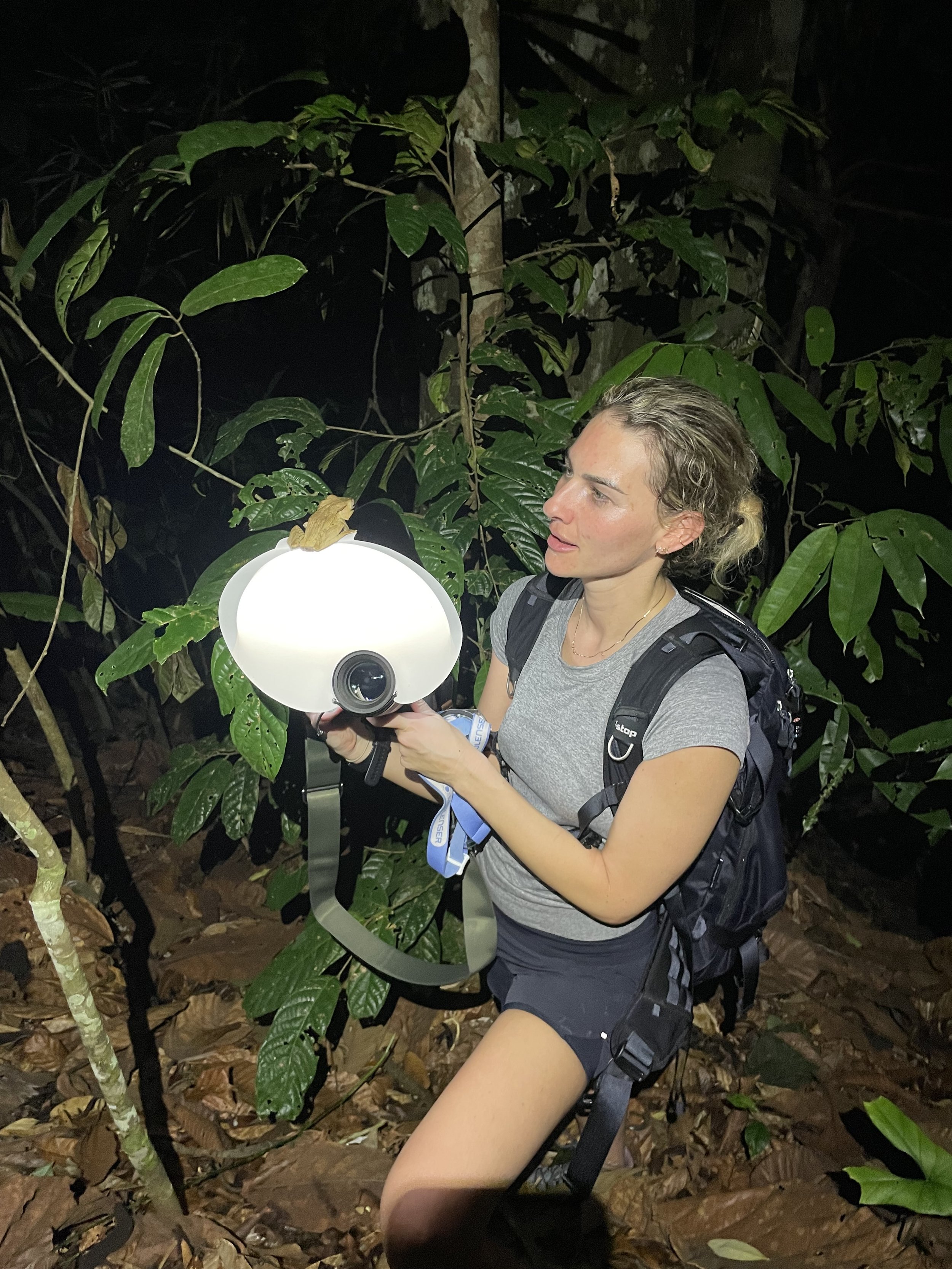The Rainforest Discovery Center
Borneo Blog Part 1
I chose to visit Sabah, Borneo, because it was close to my current residence in the Maldives and my dear friend Kat from Australia. After being surrounded by endless oceans and beaches for so long, I longed to be encased in a dense jungle. Borneo would be perfect due to its amazing biodiversity and concentration of wildlife. Unfortunately, Borneo has one of the highest deforestation rates on the planet, mainly due to slash-and-burn practices to develop more palm oil plantations. Palm oil is found in nearly everything – it's in close to 50% of the packaged products we find in supermarkets, and it's also used in animal feed and as a biofuel in many parts of the world.
Borneo is the third largest island on the planet and is comprised of three different countries. The only country that is on the island is Brunei. The other two are Malaysia and Indonesia. In 2017, I visited Kalimantan, the Indonesian side of the island. I will be heading to a new spot in the Malaysian state of Sabah.
Day 1
July 9th 2023
I met my friend Kat at the airport, and we took a morning flight from Kuala Lumpur to Sandakan. The plane was delayed for an hour, and we got into Sandakan at 14:00. I chose this airport to fly into because of its convenience and being semi-centrally located close to all the spots I planned to visit during this trip in Borneo.
We got to our lodging, Sepilok B&B, and checked in to drop off our bags before gearing up and heading into the Rainforest Discovery Center. This location is where we will base ourselves over the next three days because there is an abundance of cool wildlife here. The Rainforest Discovery Center also has one of the best and highest canopy walks in Sabah, and the main goal of being here is to watch wildlife from above. A nice elevation allows you to shoot equally with the arboreal animals rather than pointing your camera up to the sky. We arrived at the Rainforest Discovery Center at 15:30 and set right out onto the canopy-walk. I climbed up the tower to view the surrounding area.
Kat's specialty is macro photography, so she was focused on the smaller subjects even though she did not bring her macro lens on this hike, just a large telephoto. She was excited when she immediately spotted a Bumblebee jumping spider, one of her main targets for the trip. We headed onto another boardwalk crossing. There were a couple of people photographing something on the floor of the walkway. As I got closer, I recognized it is a Malaysian leaf mantis, a species I have always wanted to see in the wild. Of course, now Kat was distraught because she did not have her macro lens set-up, but we managed to get some nice photos for proof of this amazing insect. I then spotted a baby leaf insect, which was adorable. I still have never seen an adult.
While returning to the lodge to get our gear, we spotted a Mangrove cat snake tucked high in the tree over the lake. This was a first for me, which was cool, but unfortunately, I could not get to it. We had a night hike scheduled for 18:00, so we raced back to our lodge, which was only about 800 meters from the center, rearranged our gear, and met the guides at the security hut.
The night hikes start by walking onto the canopy to an area where the Red giant flying squirrels hang out. Sabah Parks and Wildlife put up nest boxes for the hornbills, but the hornbills were not interested, and preferred hollowed-out trees. However, the squirrel species in the area took it upon themselves to take over the nest boxes. At about 18:00, we could see their faces starting to poke out of the boxes. They had the same hair color as me, which was very fun to see.
The squirrels would leave the nest box and gallop up the trees to the highest spot. They would do a little grooming and test the wind a bit. Then they leapt into the air and extended their membrane. One went right over my head and glided a solid 300 meters. That was one of the coolest things I have seen, and this was only our first day in Sabah!
We headed back to the ground to the start of our night hike. We managed to follow a guide with a group of tourists from the UK and set off down the trail. The very first animal we found was an amazing Bornean Keeled Pit viper. This was my lifer!
This viper is one of the coolest snakes in this part of the world. The juveniles look different than the adults, which also look different if they are male or female. We photographed it for about 15 minutes and then returned to the trail. The guide and the group were off the trail looking at something, and one of the guides said, “tarsier”. This is an animal I have always wanted to see in the wild because they are one of the oddest mammals on the planet. They belong to their own group of primates. Tarsiers have the largest eye-to-body ratio of any mammal. They are also the only primate that strictly eats meat. The tarsier hung out there for a bit while we watched it and took photographs.
only had my micro lens on, so I could not get the most amazing shot, but it was a proof-photo, nonetheless. We ended up seeing two more tarsiers during the hike. While looking into a creek bed, Kat spotted an Eight-striped kukri snake. They get their name due to the shape of their teeth which look like a kukri blade.
The guides circled up one of the canopy-walk platforms, and we walked the length of it. Kat spotted some amazing bugs while I was searching for reptiles. She found the Orange huntsman spider, a flatworm, and a vinegarroon, a type of arachnid that can squirt an acidic fowl-smelling mixture from its abdomen as a defense mechanism. We spotted some giant squirrels, but they were too far up to get photos, and then we spotted another Keeled pit viper about the same size as the other, which was amazing. We finished the night hike and returned to the lodge.
Day 2
July 10th 2023
Breakfast was at 7, so we woke up just before then and, after breakfast, headed back to the Rainforest Discovery Center. Hence, we got right into the action as wildlife is active early in the morning and late in the evening during this time of year. I knew of two people from Instagram who were going to be in the area, so Kat and I met Nick and Craig at the gate for the Rainforest Discovery Center. Nick and Craig were running a guided trip together, so they had a couple of days to get grounded before the big trip started. We all walked to the canopy, and Nick spotted the first exciting animal, a Bornean gibbon. These are honestly one of my favorite animals due to their form of brachiation. That is the term for how an ape or monkey moves through the forest.
We watched him for about 15 minutes before heading to an area known for orangutans. Some folks I had spoken to said they saw one there during their night hike. Orangutans make their nest before bed and typically hang out around the area when they wake up. We hiked to the back part of the center. We stopped to scan around, headed onto a boardwalk, and heard a person call out. Orangutans turned around, and sure enough, there was not one but two of them climbing up a tree. They are truly amazing animals and seeing them in the wild after almost seven years was just as awe inspiring for me as the first time.
I was speaking with Nick and photographing the orangutans when I noticed someone walking up. I recognized her as Dixie, a friend of mine from when I lived in Micronesia! She works as a physician’s assistant in Saipan and uses her off time to come to Sabah. We did what all wildlife lovers do and caught up with each other while photographing the orangutans in foraging mode. They were not in the best spot as they were in direct sunlight, and the foliage wasn’t doing our photos justice.
We hung out with the orangutans for about another hour before heading off to look for that viper we saw last night since vipers like this tend to have spots and stay there for several days to a couple of weeks. Sure enough, we spotted the snake again and got some amazing photos.
It was getting hot, so we headed to a giant tree that they had marked on the map, and it was giant! We should have gone earlier because now the sun was high in the sky, making it difficult to get a nice panning shot and scale shots because of the harsh light. While we were heading back to the entrance, Nick spotted a Draco lizard crawling up the side of a tree. These amazing lizards have evolved to glide from tree to tree.
Kat and I said our goodbyes to Nick and Craig, and we headed back to the lodge to get some lunch as the heat settled over the day and all the wildlife was hiding from the sun.
At 15:00, we headed for the Sun Bear Rescue Center. I have a lot of admiration for this center because they are doing great conservation work with Sun bears. Sun bears are the smallest bear species on the planet (FYI, koalas are not bears), and adult males are around 60kg (120 lbs). When they are cubs, they look like dogs, and due to their small size, Sun bears, unfortunately, end up in captivity only to be turned over or rescued because they are wild animals that are not able to be domesticated at all. They had nice large enclosures that allow the bears to hide from people if they don’t want to be seen. We saw three bears foraging around, which was very cool. It's unbelievable how small they are.
Mammals tend to hide in the midday as it's hotter, and since the center closed at 16:00, this would be our last chance to see the bears. We started walking when Kat gasped and pointed to the boardwalk's railing.
There was a leaf, but not an actual leaf. To my surprise, it was my favorite species of insect, the leaf insect. They belong to a group of insects called Phyllidea and take leaf-mimicking to the most extreme of any other genus of insects. Everyone was marveling at this little bug. She was an adolescent female who had size but was not yet an adult. It was still so amazing to see these insects, as they are very rare.
We set her on a leaf and headed to another viewing area for the bears. A beautiful Sun bear was snuggling up and enjoying a nap on top of a tree. One of the staff workers came over and told us the bear’s name was Romolina. Sun bears have a pattern that resembles a crescent shaped yellow patch on their chests that is said to resemble the rising sun. This patch is unique to individuals like our fingerprints are unique to us.
Walking back from the spot, we spotted a snake eating a lizard. It was a type of colubrid, but I was not sure about the species, so I did not handle it. If you can't ID it, don’t touch it. It is a great rule of thumb in the reptile world.
We returned to our lodge and prepared for the long night ahead of us. I brought my big lens and macro lens while Kat brought her macro set-up because she wanted to get the shots of all the insect species that use the canopy-walk railings as a mini highway through the jungle. As we headed out, I heard someone call out “orangutans”, and saw two orangutans walking along the canopy coming our way. It was a male and female. Seeing them in person is an incredible experience because we are so closely related to these magnificent animals.
The way they move and look around, there are so many similarities to humans. It baffles me that there are people who don’t believe we are related to apes even though we have much of the same anatomy and behavioral characteristics. The orangutans moved into the trees just off the side of the canopy-walk, which was great because now we were level with them, allowing me to take better photos. Another one decided to join the group, making the total three individuals. One male decided to show off his stuff while eating, which turned out to be a great, funny shot.
I watched the orangutans forage for another hour, just soaking in the experience. It was time to check in for the night hike, so I went to find Kat and we headed to the check-in station. Dixie, who was with us earlier, joined us on the hike along with a German photographer named Yans, whom we met on the canopy-walk. We went to the flying squirrel spot, and I only used my phone this time to get a video, since the day before, I was focused on getting photographs of the squirrels.
After I got one of the best video’s I think I have ever taken on my phone, we headed into the forest.
The first animal I found, one of Kat's ultimate targets, was the lantern fly, a type of treehopper with a large nose. They hang out in groups on the sides of trees in Southeast Asia and tend to have nice colors and great contrast.
We spotted some tarsiers, but I never got a good shot. Then we walked past a bridge, and I spotted a snake and had to do a serious double-take because it looked so much like a stick. This species is the Slug-eating snake.
I spotted a large centipede on the side of a tree, and we found more lantern flies. It was getting late, as the guides needed to slow their pace because we preferred looking for bugs and reptiles over mammals. I spotted a lovely species of frog I hadn’t seen before when I caught its eyeshine at the last second. The File ear tree frog is one of the larger species from Borneo.
We headed out from the center and returned to the lodge for a much-deserved meal of Me Gerang and a beer. I looked at my watch, and it said I did about 15 miles of walking that day. I think I enjoyed that the most because living in the Maldives, I can’t walk far because it's all islands. I went to bed because we were heading to Tabin Wildlife Reserve the next day and was asleep as soon as my head hit the pillow.
















































